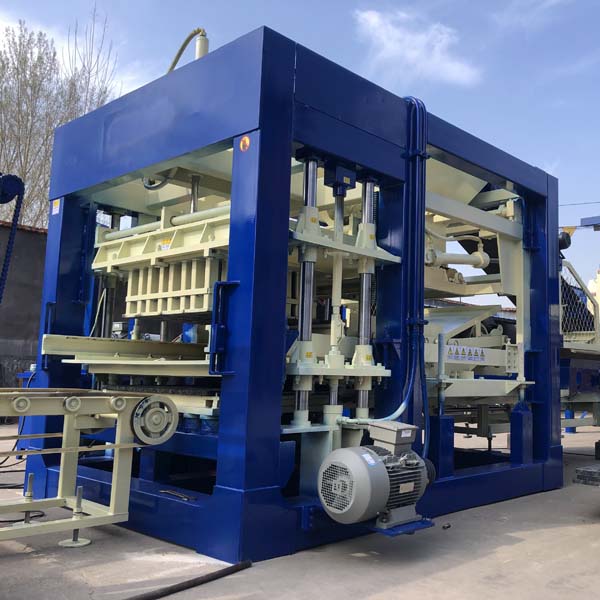
The construction industry stands at the precipice of a transformative era, driven by innovative technologies that promise to enhance efficiency and promote sustainability.
One such groundbreaking invention that has garnered significant attention is the cutting-edge brick making machine.
This essay delves into the remarkable advancements in brick-making technology, exploring how these machines are revolutionizing construction processes, optimizing resource utilization, and contributing to a more sustainable future.
The Evolution of Brick Making Technology
Brick making is a practice deeply rooted in human history, with origins dating back to ancient civilizations.
Traditional methods, involving manual labor and kiln firing, have persisted for centuries.
However, the advent of industrialization brought about substantial changes, leading to the mechanization of various processes, including brick production.
The evolution from manual to mechanized brick making paved the way for greater consistency and output, setting the stage for the cutting-edge machines we witness today.
Modern brick making machines are a testament to the marriage of engineering ingenuity and construction demands.
These machines have evolved to encompass intricate designs and advanced features that optimize efficiency while prioritizing sustainability.
Efficiency Enhancement through Automation
One of the most remarkable aspects of cutting-edge brick making machines is their ability to automate various stages of brick production.
Automation significantly accelerates the manufacturing process, reducing the reliance on manual labor and the potential for human error.
Automated machines streamline tasks such as material preparation, molding, pressing, and curing, ensuring each brick is precisely crafted to meet desired specifications.
Automation also enhances the consistency and quality of bricks.
With traditional methods, variations in hand-molded bricks often resulted in irregularities that posed challenges during construction.
In contrast, modern machines produce uniform bricks with minimal variations, contributing to enhanced structural integrity and easier assembly.
Sustainable Brick Production: Resource Optimization and Environmental Impact
Efficiency is not the sole benefit of cutting-edge brick making machines; they also play a pivotal role in promoting sustainability.
Traditional brick production methods consume vast amounts of natural resources, including clay and water, and emit significant amounts of greenhouse gases through kiln firing.
In contrast, advanced brick making machines optimize resource utilization and mitigate environmental impact in several ways.
Reduced Resource Consumption: Modern machines are designed to use raw materials more efficiently, minimizing waste and maximizing output.
They employ advanced mixing and molding techniques that require fewer raw materials per brick, thus reducing overall resource consumption.
Energy Efficiency: Unlike conventional kiln firing, which demands high energy input, modern brick making machines incorporate innovative curing processes that utilize significantly less energy.
This contributes to reduced greenhouse gas emissions and a smaller carbon footprint.
Innovative Materials: Some cutting-edge machines enable the use of alternative building materials, such as recycled aggregates or industrial byproducts, further reducing the environmental strain associated with traditional brick production.
Advancing Construction Practices and Architectural Freedom
The integration of cutting-edge brick making machines into construction processes is not limited to efficiency and sustainability; it also opens new avenues for architectural creativity and flexibility.
These machines can produce bricks in diverse shapes, sizes, and textures, empowering architects and builders to experiment with innovative designs that were previously impractical or labor-intensive.
Moreover, the rapid production facilitated by these machines enables construction projects to meet tight deadlines without compromising quality.
This is particularly crucial in today’s fast-paced construction industry, where timely project completion is often a key determinant of success.
Challenges and Future Prospects
While the potential of cutting-edge brick making machines is undeniable, challenges remain on the path to widespread adoption.
Initial investment costs, training requirements for machine operation and maintenance, and the need for standardized regulations are some of the hurdles that must be addressed.
Collaboration among stakeholders, including manufacturers, construction companies, and policymakers, is essential to overcome these challenges and facilitate the seamless integration of this transformative technology.
Looking ahead, the future of brick making machines holds immense promise.
Continued research and development will likely lead to even more efficient, versatile, and sustainable machines, further pushing the boundaries of construction possibilities.
In conclusion, the cutting-edge brick making machine represents a pivotal advancement that is revolutionizing the construction industry.
Its incorporation of automation, resource optimization, and sustainable practices underscores its potential to enhance efficiency while minimizing environmental impact.
This technology not only streamlines brick production but also redefines construction processes, enabling architects and builders to explore innovative designs and meet demanding project timelines.
As the construction sector navigates the challenges of the modern world, the adoption of these machines offers a promising pathway toward a more efficient, sustainable, and architecturally diverse future.
